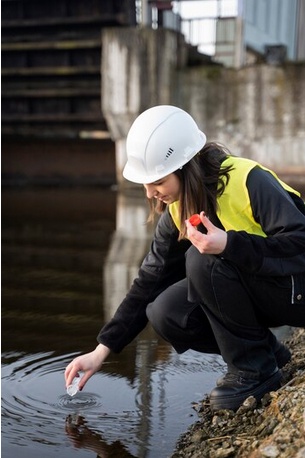Introduction
As urbanization continues to expand, the management of stormwater runoff becomes increasingly crucial to mitigate flooding, erosion, and pollution. Traditional drainage systems often struggle to cope with the demands of urban areas, leading to environmental degradation and infrastructure strain. In response, sustainable drainage strategies have emerged as effective solutions to address these challenges. This guide explores the principles, benefits, and implementation of sustainable drainage strategies, offering a roadmap for navigating the waters towards a more resilient and environmentally friendly approach to managing stormwater.
Understanding Sustainable Drainage
Sustainable drainage, also known as green infrastructure or low-impact development, aims to mimic natural hydrological processes to manage stormwater at its source. Unlike conventional drainage systems that swiftly transport runoff away from urban areas, sustainable drainage focuses on infiltration, storage, and slow release of water, reducing the burden on traditional infrastructure and minimizing environmental impact.
Key Principles
-
Retention and Infiltration: Sustainable drainage systems prioritize retaining stormwater on-site and encouraging its infiltration into the ground. This helps replenish groundwater reserves and reduces surface runoff, minimizing the risk of flooding and erosion.
-
Naturalization of Watercourses: Instead of channelizing waterways with concrete structures, sustainable drainage emphasizes restoring natural watercourses, such as streams and wetlands. These natural features not only enhance biodiversity but also provide effective flood attenuation and water quality improvement.
-
Use of Permeable Surfaces: Permeable pavements, green roofs, and rain gardens are examples of surfaces designed to allow water to infiltrate rather than runoff. Integrating such features into urban landscapes helps to manage stormwater locally while providing additional environmental and aesthetic benefits.
-
Multi-functional Design: Sustainable drainage systems are designed to serve multiple purposes beyond stormwater management. They can enhance green spaces, improve air quality, and create habitat for wildlife, contributing to overall urban livability and resilience.
Benefits of Sustainable Drainage
-
Flood Risk Reduction: By attenuating stormwater runoff and promoting infiltration, sustainable drainage systems help mitigate the risk of flooding, protecting properties and infrastructure from water-related damage.
-
Water Quality Improvement: By filtering pollutants and sediments, sustainable drainage systems enhance water quality, reducing contamination of rivers, lakes, and groundwater reserves.
-
Enhanced Urban Environment: Integrating green infrastructure into urban landscapes improves aesthetics, provides recreational opportunities, and supports biodiversity, creating healthier and more vibrant communities.
-
Climate Resilience: Sustainable drainage strategies are inherently adaptable to changing climate conditions, helping communities better cope with extreme weather events and long-term climate impacts.
Implementation Strategies
-
Policy and Regulation: Governments can play a crucial role in promoting sustainable drainage through legislation, regulations, and incentives. This may include requirements for green infrastructure in urban development projects, stormwater management regulations, and financial incentives for adopting sustainable practices.
-
Collaborative Planning: Effective implementation of sustainable drainage requires collaboration among various stakeholders, including government agencies, developers, community groups, and environmental organizations. Engaging stakeholders early in the planning process fosters buy-in and ensures that projects meet the needs of both the community and the environment.
-
Education and Outreach: Public awareness and education campaigns are essential for promoting the benefits of sustainable drainage and encouraging adoption at the individual and community levels. Outreach efforts can include workshops, demonstrations, educational materials, and online resources to inform residents, businesses, and decision-makers about the importance and feasibility of green infrastructure.
-
Technical Guidance and Support: Providing technical guidance, training, and support to engineers, planners, and developers is critical for successful implementation of sustainable drainage projects. This may involve developing design standards, offering training workshops, and providing technical assistance to ensure that projects are designed and constructed effectively.
Conclusion
Sustainable drainage strategy offer a holistic approach to managing stormwater that not only addresses the challenges of urbanization but also promotes environmental sustainability, resilience, and community well-being. By prioritizing retention, infiltration, and naturalization of waterways, these strategies mitigate flood risk, improve water quality, enhance urban environments, and contribute to climate resilience. Successful implementation requires a combination of policy support, collaborative planning, public education, and technical guidance. As communities continue to grapple with the impacts of urbanization and climate change, embracing sustainable drainage is essential for building a more resilient and sustainable future.


No comments yet